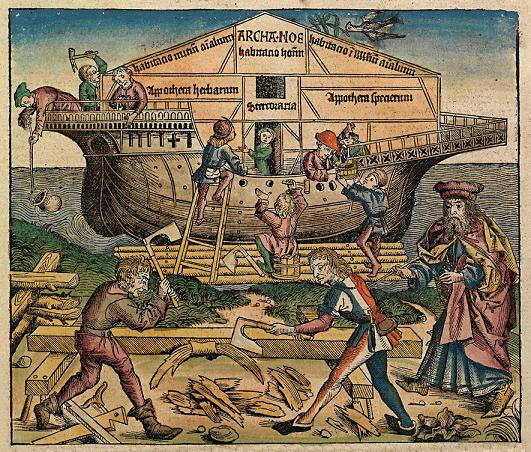I believe that many things had been written before Moses. Adam, I assume, wrote the stories of the creation, the fall, the promise of the seed of the woman, etc., likewise the other fathers, especially Noah, wrote what happened at their time. Afterward Moses took this material and brought it into good order, took away and added what and how God commanded him. (Martin Luther, Table Talk #171; quoted in M. Reu, Luther and the Scriptures [Columbus, Ohio: Wartburg Press, 1944], p. 163)
I think many things had been written before Moses and that Moses took these things and added to them what God commanded him. No doubt he had the story of the creation from the tradition of the fathers. All in all, I believe that the preaching of the promised seed of Adam was greater before the Flood than the preaching of Christ is now. There must have been heretics then, too. (Martin Luther, Table Talk #291, Luther’s Works, Vol. 54 [Philadelphia: Fortress Press, 1967], pp. 40-41)
Genesis is the right book. One should read and learn it. There we see that the ancient patriarchs agree with our faith. In my opinion, however, Genesis was not by Moses, for there were books before his time and books are cited – for example, the Book of the Wars of the Lord and the Book of Jashar [cf. Num. 21:14; Josh. 10:13]. I believe that Adam wrote for several generations, and after him Noah and the rest, to describe what happened to them. (Martin Luther, Table Talk #4964, Luther’s Works, Vol. 54, p. 373)
Archaeological discoveries have produced thousands of clay tablets from Mesopotamia, written in a strange wedge-shaped script. In many instances the tablets that have been recovered exhibit a specific literary form comprising a title, followed by the body of the text and concluding with a colophon. This latter feature generally contained the name of the owner or scribe and some attempt at dating. Since the colophon comes at the end of a tablet or a series of tablets, it naturally refers to material that precedes it on the tablet. Using these archaeological records as a pattern of specific literary activity, it is possible for anyone to isolate eleven sections of material from Genesis once the colophon has been identified. The presence of a colophon is indicated by the recurring phrase, “These are the generations (toledot) of...,” the Hebrew phrase meaning “histories, family histories, genealogies.” The juxtaposition of the various sections with the minimum of editorial intervention presents a history of mankind from creation to the period of Joseph. A separate concurrent section with an Egyptian rather than a Mesopotamian or Canaanite cultural background completed the extant book of Genesis, and may well have been compiled by the scribe who assembled the tablet material. (R. K. Harrison, Preface to Ancient Records and the Structures of Genesis by P. J. Wiseman [edited by D. J. Wiseman] [New York: Thomas Nelson Publishers, 1985], p. 17)
P. J. Wiseman...seems to have found the key that unlocks the details of the authorship of Genesis. His thesis is that internal clues in Genesis reveal how it was written; that the actual authors of Genesis were Adam, Noah, the sons of Noah, Shem, Terah, Ishmael, Isaac, Esau, Jacob, and Joseph; that the authors, other than Joseph, probably wrote in cuneiform on clay tablets; and that Moses, using these records, was the redactor or editor of Genesis rather than its author. (Marvin L. Lubenow, Bones of Contention: A Creationist Assessment of Human Fossils, Revised and Updated [Grand Rapids: Baker Books, 2004], p. 319)

Illustration from the Nuremberg Chronicles